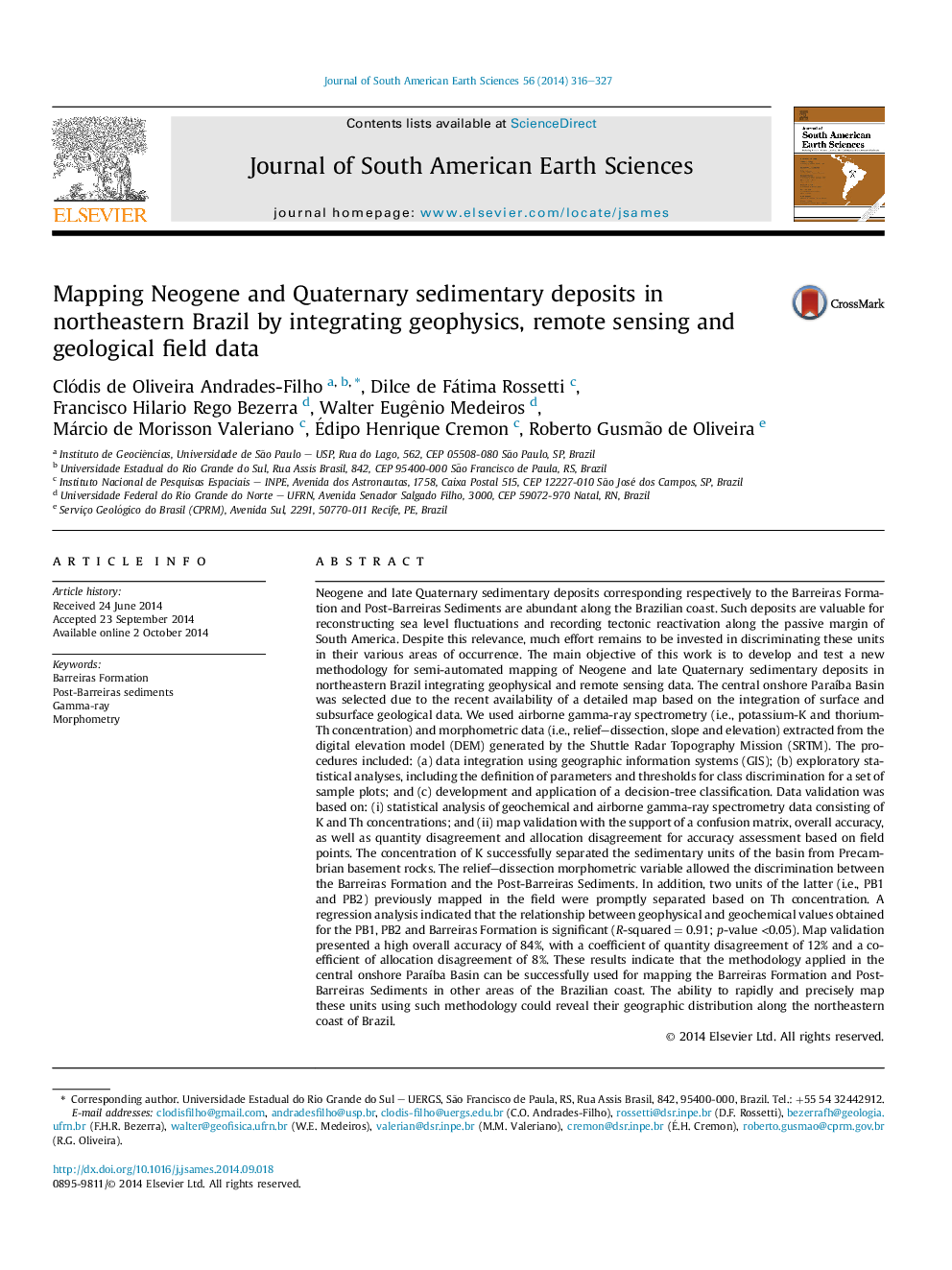| کد مقاله | کد نشریه | سال انتشار | مقاله انگلیسی | نسخه تمام متن |
|---|---|---|---|---|
| 6431387 | 1635153 | 2014 | 12 صفحه PDF | دانلود رایگان |
- Neogene/late Quaternary sedimentary deposits are extensive along the Brazilian coast.
- They are valuable to reconstruct sea level and neotectonics in this passive margin.
- However, basic mapping of these deposits remain to be presented.
- A semi-automated mapping based on airborne gamma-ray spectrometry and geomorphometry is presented.
- Such methodology was statistically validated and can optimize geological mapping.
Neogene and late Quaternary sedimentary deposits corresponding respectively to the Barreiras Formation and Post-Barreiras Sediments are abundant along the Brazilian coast. Such deposits are valuable for reconstructing sea level fluctuations and recording tectonic reactivation along the passive margin of South America. Despite this relevance, much effort remains to be invested in discriminating these units in their various areas of occurrence. The main objective of this work is to develop and test a new methodology for semi-automated mapping of Neogene and late Quaternary sedimentary deposits in northeastern Brazil integrating geophysical and remote sensing data. The central onshore ParaÃba Basin was selected due to the recent availability of a detailed map based on the integration of surface and subsurface geological data. We used airborne gamma-ray spectrometry (i.e., potassium-K and thorium-Th concentration) and morphometric data (i.e., relief-dissection, slope and elevation) extracted from the digital elevation model (DEM) generated by the Shuttle Radar Topography Mission (SRTM). The procedures included: (a) data integration using geographic information systems (GIS); (b) exploratory statistical analyses, including the definition of parameters and thresholds for class discrimination for a set of sample plots; and (c) development and application of a decision-tree classification. Data validation was based on: (i) statistical analysis of geochemical and airborne gamma-ray spectrometry data consisting of K and Th concentrations; and (ii) map validation with the support of a confusion matrix, overall accuracy, as well as quantity disagreement and allocation disagreement for accuracy assessment based on field points. The concentration of K successfully separated the sedimentary units of the basin from Precambrian basement rocks. The relief-dissection morphometric variable allowed the discrimination between the Barreiras Formation and the Post-Barreiras Sediments. In addition, two units of the latter (i.e., PB1 and PB2) previously mapped in the field were promptly separated based on Th concentration. A regression analysis indicated that the relationship between geophysical and geochemical values obtained for the PB1, PB2 and Barreiras Formation is significant (R-squared = 0.91; p-value <0.05). Map validation presented a high overall accuracy of 84%, with a coefficient of quantity disagreement of 12% and a coefficient of allocation disagreement of 8%. These results indicate that the methodology applied in the central onshore ParaÃba Basin can be successfully used for mapping the Barreiras Formation and Post-Barreiras Sediments in other areas of the Brazilian coast. The ability to rapidly and precisely map these units using such methodology could reveal their geographic distribution along the northeastern coast of Brazil.
Journal: Journal of South American Earth Sciences - Volume 56, December 2014, Pages 316-327
